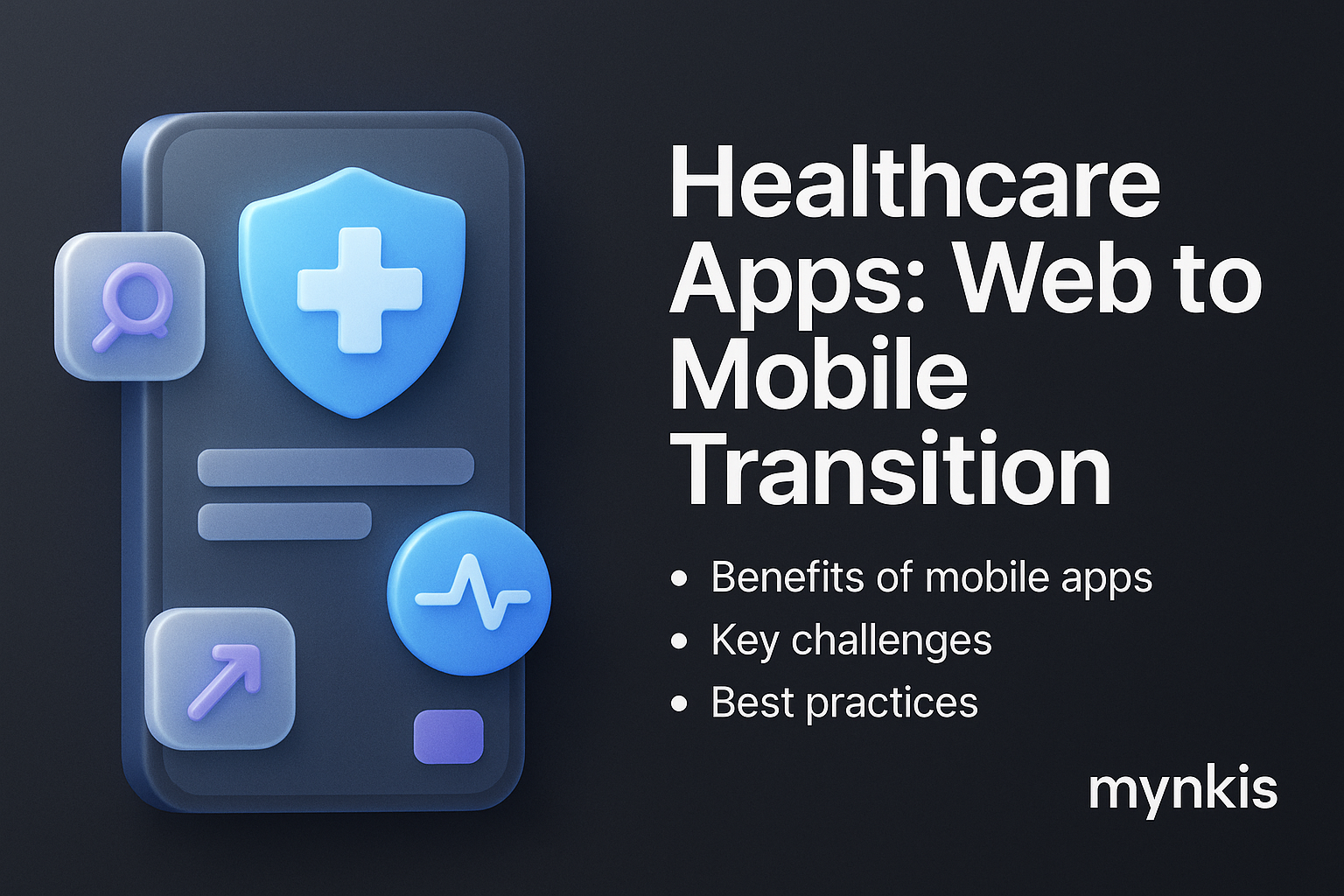Schedule a Demo
The healthcare sector is ripe for digital transformation. With an increasing number of patients using mobile devices to access health information, the shift from web to mobile becomes not just a trend but a necessity. In my experience working with clinics and hospitals, I've noticed a common desire for seamless patient portals and secure data management systems that patients can access from anywhere.
When contemplating a transition from web to mobile, several factors need to be addressed. One of the most critical is compliance with regulations like HIPAA in the United States. Ensuring that patient data remains secure and private is paramount. Another key consideration is user experience (UX). The transition needs to be smooth and intuitive, enabling patients to navigate their healthcare journey with ease.
A mobile-first design approach can significantly improve the usability of healthcare apps. This means designing the app for the smallest screen first and scaling up for larger devices. In my interactions with patients, the emphasis on easy navigation and quick access to important health information is a frequent request. Streamlining the user interface for smaller screens enhances the overall experience and accessibility.
Progressive Web Apps offer a bridge between traditional web applications and native mobile apps. They provide the user experience of a native app while retaining the flexibility and reach of a web app. From my observations, PWAs have been gaining traction in healthcare settings for their ability to deliver offline capabilities and instant load times, which are crucial for patient engagement and retention.
APIs (Application Programming Interfaces) play a pivotal role in the functionality of healthcare apps. They enable seamless integration with existing systems like electronic health records (EHR) and third-party services. The use of APIs allows for real-time data syncing, ensuring that both patients and healthcare providers have access to the most current information.
Security cannot be overstated when transitioning to a mobile platform. Mobile apps must be fortified against potential data breaches and cyber threats. The implementation of encryption protocols and multi-factor authentication adds layers of protection to sensitive health data. In conversations with security experts, I've learned that regular audits and updates are essential to maintaining a robust security posture.
Performance is another crucial aspect of mobile app development. Patients expect apps to load quickly and operate smoothly, even on slower network connections. Techniques such as code splitting, lazy loading, and optimizing images can significantly enhance the performance of healthcare apps. I've seen how these optimizations can reduce patient frustration and increase app usage.
Thorough testing is essential in the development of healthcare apps. This includes not only technical testing but also usability testing with actual patients. Gathering feedback and iterating on the app's design and functionality can lead to a more effective and patient-friendly solution. In projects I've been involved in, the iteration process has been vital in addressing real-world challenges faced by both patients and healthcare providers.
Let's examine a case study where a community clinic successfully transitioned their patient portal from a web-based platform to a mobile app. The clinic collaborated with a development team to ensure HIPAA compliance and a user-friendly interface. The result was an app that patients could use to book appointments, view test results, and communicate with their healthcare providers from their smartphones. The clinic reported increased patient satisfaction and engagement post-transition, highlighting the benefits of a well-executed mobile strategy.
Healthcare apps must cater to a diverse user base, including those with varying levels of tech-savviness and accessibility needs. Incorporating features like voice commands, larger text options, and high-contrast modes can make the app more inclusive. In my discussions with accessibility experts, the emphasis has always been on designing for all users, ensuring that everyone can benefit from the mobile transition.
It's important to consider the future of healthcare technology when transitioning from web to mobile. Keeping an eye on emerging technologies like AI and machine learning can position your app at the forefront of innovation. Additionally, ensuring your app's architecture is scalable and adaptable will allow for easier updates and integration of new features as the healthcare landscape evolves.
Engaging with patients and other stakeholders throughout the development process is crucial. Their insights can guide the app's direction and ensure it meets their needs effectively. In my work with clinics, I've seen how involving patients in focus groups and beta testing can provide invaluable feedback, leading to a more tailored and effective app.
Mobile apps have the potential to enhance the efficiency of healthcare delivery. From streamlining administrative tasks to providing instant access to patient records, a well-designed mobile app can save time for both healthcare providers and patients. My observations suggest that mobile apps can lead to quicker response times, better patient outcomes, and increased operational efficiency.
The cost of developing a mobile app should be weighed against the value it brings to patients and healthcare providers. While the initial investment can be significant, the long-term benefits—such as improved patient engagement and streamlined operations—often justify the expenditure. In cost-benefit analyses I've conducted, the potential for increased patient retention and satisfaction typically outweighs the initial costs.
